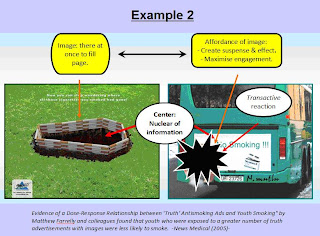What is a good document?
Readers do not only read the printed words on a page, they also read the visual presentation of the text...
(Diana Reep)
IN order to label one document as a good and well-composed piece, certain criteria and elements need to co-exist within the document itself. However, this is indeed a subjective approach as every individual possesses a variety of preferences and interpret documents differently. Hence, it is essential to know what you, as a designer is writing and what you hope that the readers will find in your piece of work (Putnis & Petelin 1996). Despite all that, various theorists have researched and concluded on how document is deemed as a good piece, or otherwise. The flow of the reading process, the position and layout of the elements, and also the form of media used were carefully discussed to ensure the effectiveness of the message conveyed.
On top of that, to enhance the effectiveness of the message conveyed, it is also vital to consider both the individual differences among readers and the shared ways that people experience and interpret documents. Therefore, document designers need to ask how the design of prose and graphics are able to contribute to the possibility of shared meanings (Schriver 1997, p. 356-366).
Figure A
According to Walsh (2006), the reading pathway of a document could be linear or non-sequential in order to cater to various forms of readers. In Figure A, the sequence portrays is non-linear as texts and images are not orderly positioned. In one way, this document is able to confuse readers onto knowing the proper flowing of the document as arrows are shooting form various corners of the texts and images in the document. However, the document is capable of evoking visual effects from readers because visuals, together with words simultaneously are able to create a better form of engagement with readers (Walsh 2006).

Figure B
What crosses your mind when you look at Figure B? The colors, I presume. The color of the background is not suitable as it is a mixture of bright colors which lastly, is able to cause readers' sight to be uncomfortable and confused. The significant role of the image (To Kill a Mockingbird) was overlapped when the choice of color for the background was almost as similar and bright as the color of the image used in Figure B. This is because; Reep (2006) indicated that colors should be chosen to reinforce the message and supports usability instead of relying on colors to convey the message.
Figure C
Unlike above, Figure C uses a softer and monotonous color for the background, therefore it is a better choice. This is due to the fact that the background used was simple and plain, the color is not disturbing to readers' eyes, and it allows the main point for the slide to be noticeable and salience as it does not blend with the content of the slide. Therefore, choosing designs with a softer tone of color is adequate enough to be used as the background. Background like this would be more soothing to the eyes hence illustrates the salience of the picture used in the slide.
"... responses are evoked by the effect of visual codes such as color, framing, line, angle, perspective, and vectors, in other words the 'visual grammar' " (Kress & van Leeuwen, 1996).
References:
1. Kress, G & van Leeuwen, T 2006, 'Chapter 6: the meaning of composition', in Reading Images: The Grammar of Visual Design, 2nd edn, Routledge, New York, p. 175-214.
1. Kress, G & van Leeuwen, T 2006, 'Chapter 6: the meaning of composition', in Reading Images: The Grammar of Visual Design, 2nd edn, Routledge, New York, p. 175-214.
2. Putnis, P & Petelin, R 1996, 'Chapter 7: writing to communicate', in Professional Communications: Principles and Applications, Prentice Hall, Sydney, p.223-263.
3. Reep, DC 2006, 'Chapter 4:Principles of document design', in Technical Writing, 6th edn, Pearson Edu Inc, New York, p.173-190.
3. Reep, DC 2006, 'Chapter 4:Principles of document design', in Technical Writing, 6th edn, Pearson Edu Inc, New York, p.173-190.
5. Walsh, M 2006, 'Textual shift: Examining the reading process with print, visual and multimodal texts' in Australian Journal of Language and Literacy, vol.29, no.1, p.24-37.



